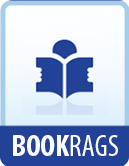* * * * *
Page 56. The Young Catechist. Lamb sent this poem to Barton in a letter in 1827, wherein he tells the story of its inception:—“An artist who painted me lately, had painted a Blackamoor praying, and not filling his canvas, stuff’d in his little girl aside of Blacky, gaping at him unmeaningly; and then didn’t know what to call it. Now for a picture to be promoted to the Exhibition (Suffolk Street) as Historical, a subject is requisite. What does me. I but christen it the ‘Young Catechist,’ and furbishd it with Dialogue following, which dubb’d it an Historical Painting. Nothing to a friend at need.... When I’d done it the Artist (who had clapt in Miss merely as a fill-space) swore I exprest his full meaning, and the damsel bridled up into a Missionary’s vanity. I like verses to explain Pictures: seldom Pictures to illustrate Poems.”
The artist was Henry Meyer (1782?-1847), one of the foundation members of the Society of British Artists in Suffolk Street, to the exhibition of which in 1826 he sent his portrait of Lamb, now in the India Office. This picture was in a shop in the Charing Cross Road in 1910.
* * * * *
Page 57. She is Going.
These lines were written for I know not what occasion, but the artist Henry Meyer engraved a picture of G.J.L. Noble in 1837 and Lamb’s lines were placed below.
Page 57. To a Young Friend.
The young friend was Emma Isola, who lived with the Lambs for some years as their adopted daughter. Emma Isola was the daughter of Charles Isola, Esquire Bedell of the University of Cambridge, who died in 1823, leaving her unprovided for. His father, and Emma Isola’s grandfather, was Agostino Isola, who settled at Cambridge and taught Italian there. Wordsworth was among his pupils. He edited a collection of Pieces selected from the Italian Poets, 1778; also editions of Gerusalemme Liberata and Orlando Furioso, and a book of Italian Dialogues. Emma Isola is first mentioned by Lamb in an unpublished letter written to her aunt, Miss Humphreys, in January, 1821, arranging for the little girl’s return to Trumpington Street, Cambridge, from London, where she had been spending her holidays with the Lambs. The Lambs had met her at Cambridge in the summer of 1820. The exact date of her adoption by the Lambs cannot be ascertained now. Emma Isola married Edward Moxon in 1833, and lived until 1891.
* * * * *
Page 58. To the Same.
Writing to Procter in January, 1829, Lamb calls Miss Isola “a silent brown girl,” and in his letter of November, 1833, to Mr. and Mrs. Moxon, he says: “I hope you [Moxon] and Emma will have many a quarrel and many a make-up (and she is beautiful in reconciliation!) ...” See the poem “To a Friend on His Marriage,” page 80, for a further description of Emma Isola’s character.




